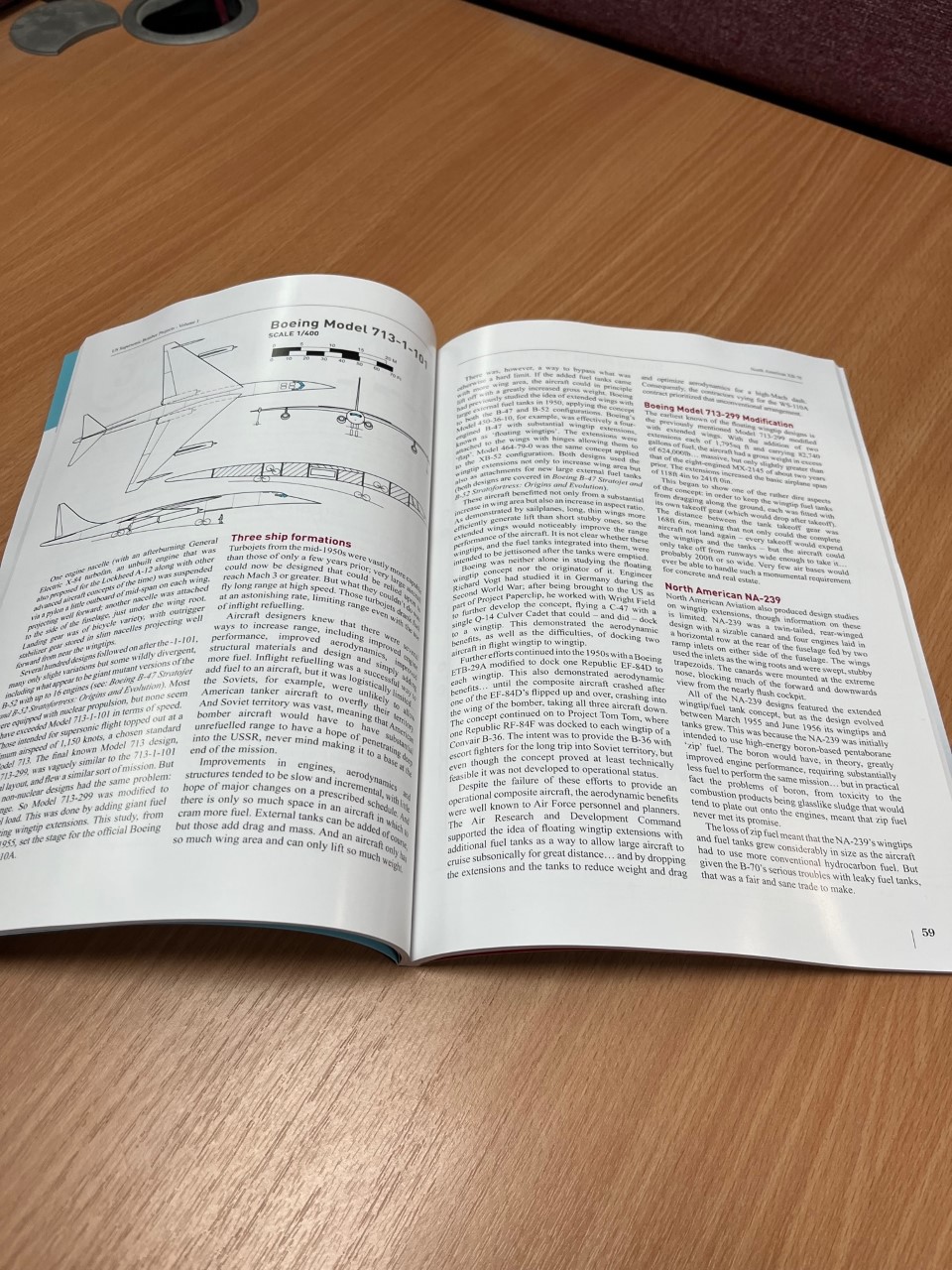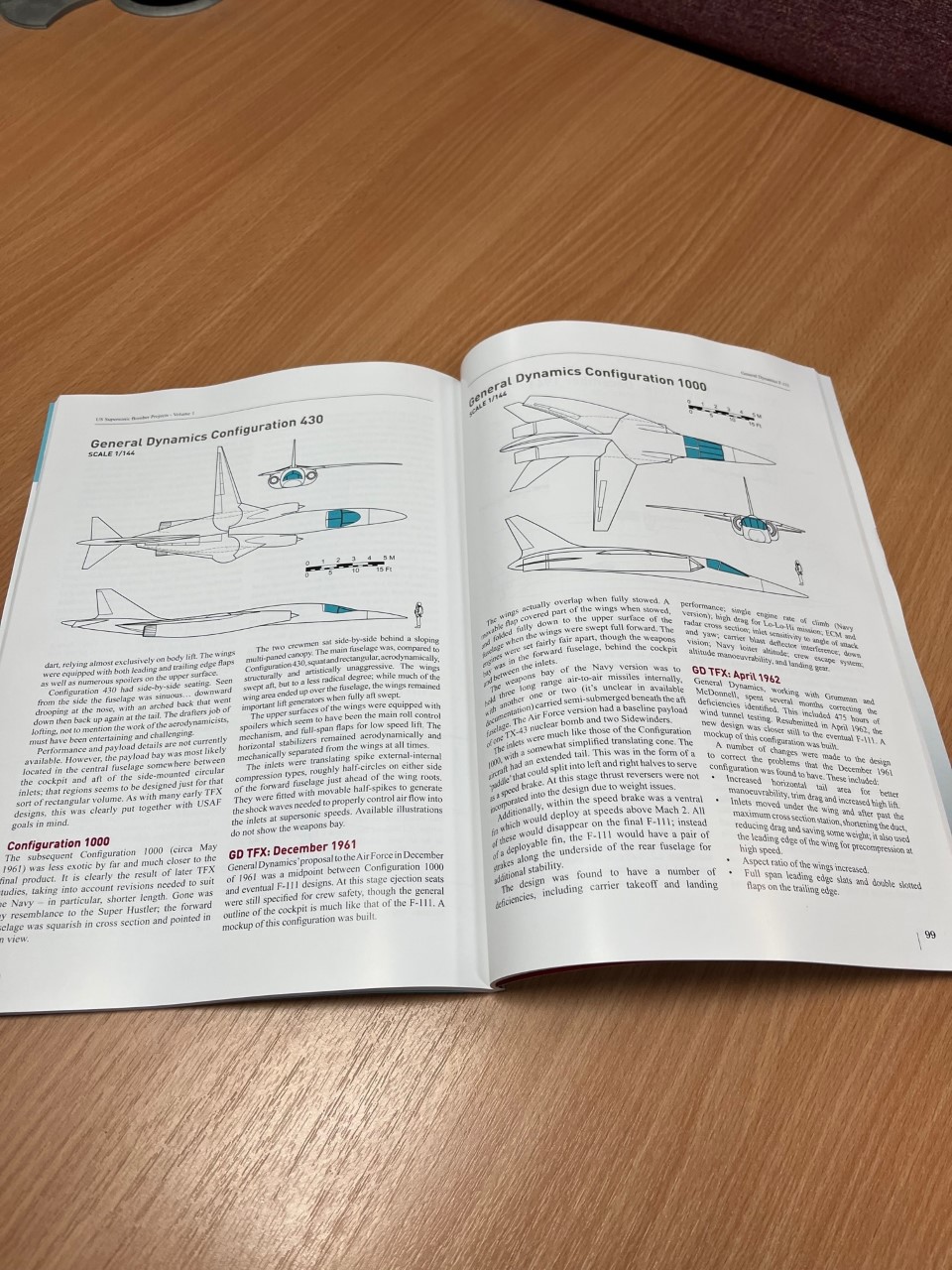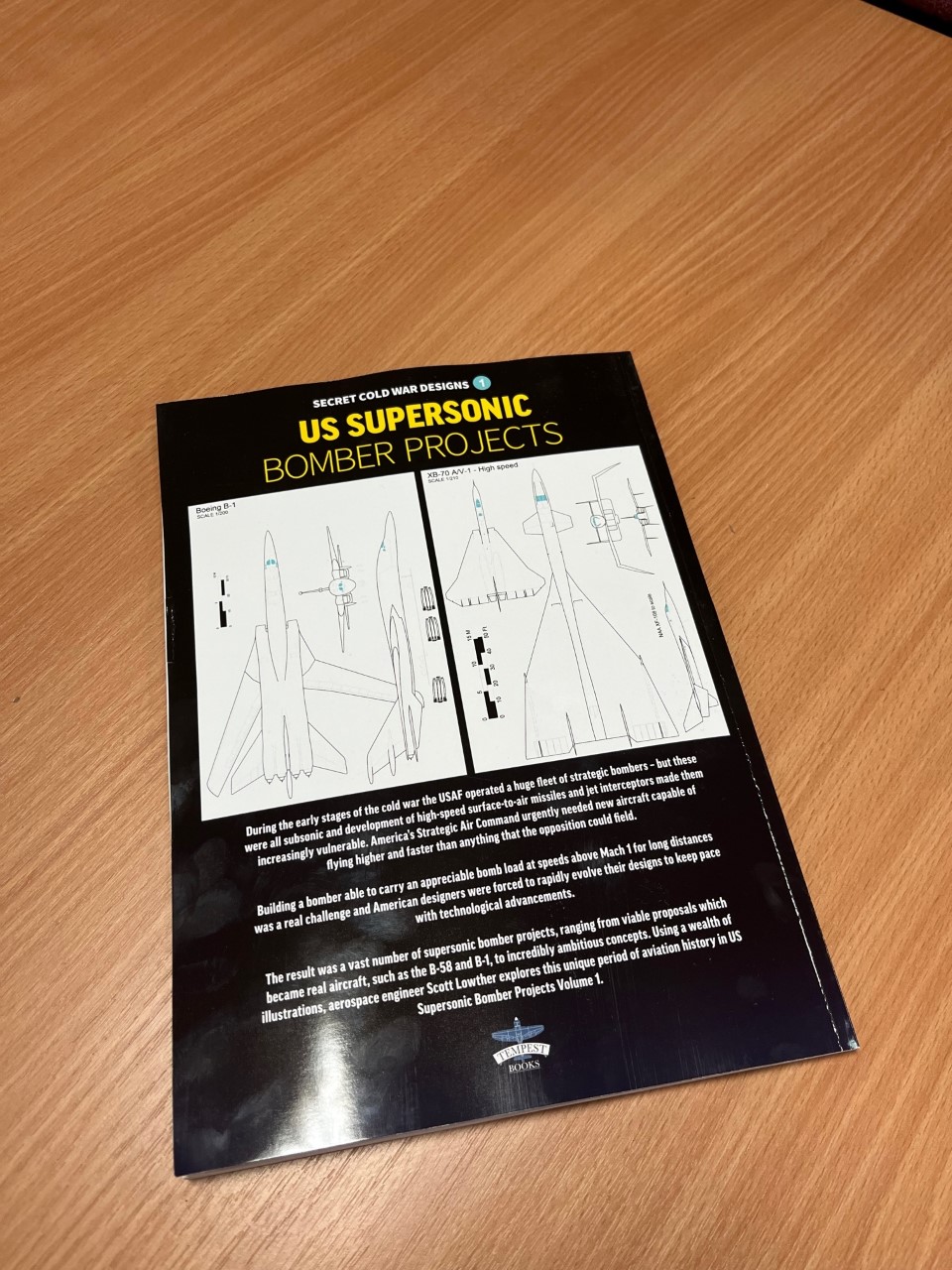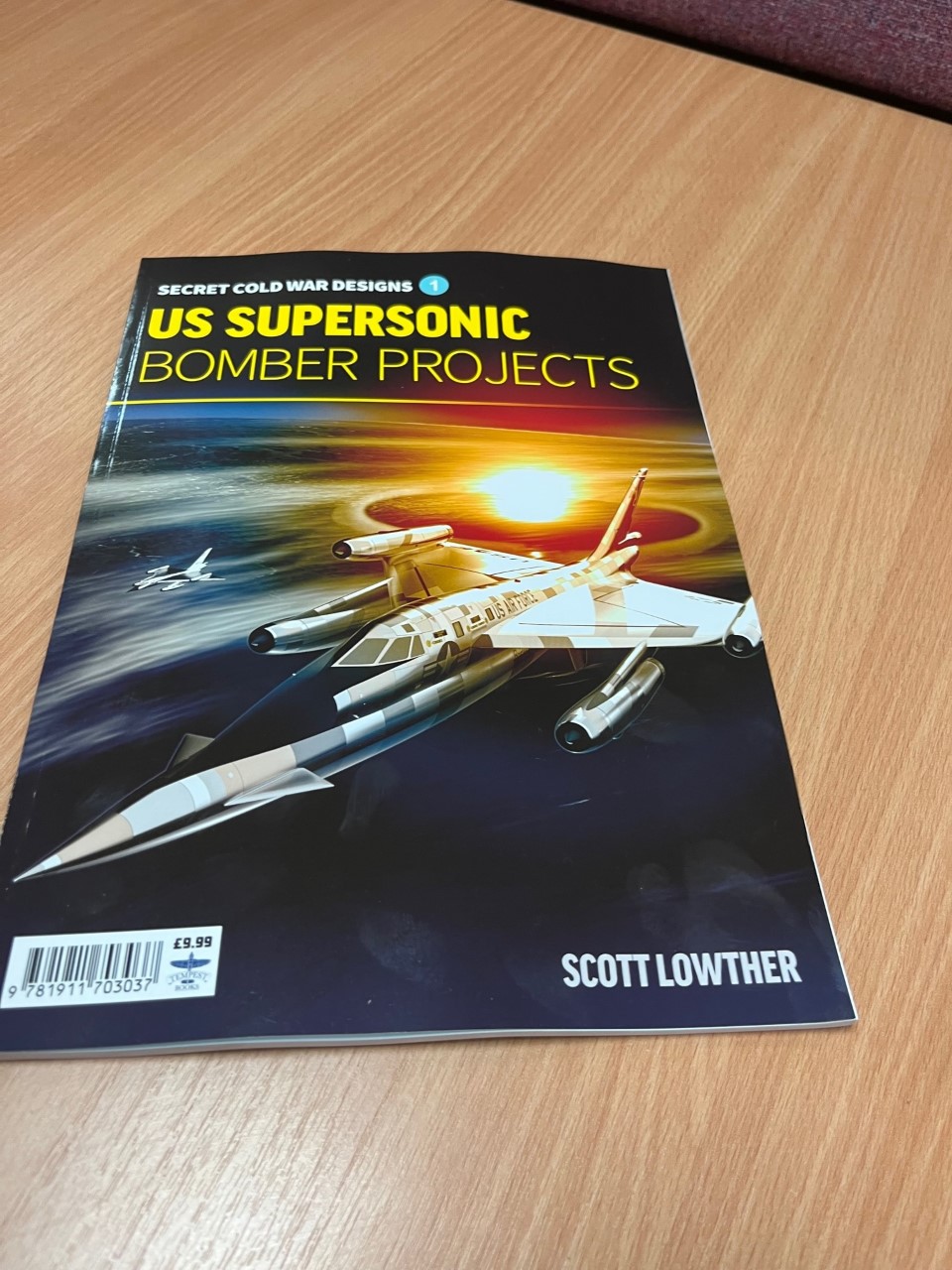A photo of a wind tunnel model of a Republic Aviation design for a Manned Hypersonic Test Vehicle configuration. The photo was published in 1969, but the program was circa 1965. It used a configuration previously studied as both an Aerospaceplane (airbreathing SSTO) and Mach 10 recon. That latter design was written about and illustrated in US Research & Recon Projects #2. You can tell that this is the subscale demonstrator, rather than one of the full-scale operational vehicles, because of the additional fuel tanks, projection from the lower fuselage. The fuselage was conical and ringed with a scramjet engine; a rocket engine in the tail would, after separation from a B-52 carrier aircraft, accelerate the vehicle past Mach 7 or so to scramjet operational speed.
Three magazine advertisements from 1960, depicting the East German Type 152 jetliner (which would have been a *fantastic* jetliner in the late 1940’s), the Convair F-106 and the Fiat G91 T jet trainer.
The full-rez scans of these ads have been uploaded into the 2022-10 APR Extras folder on Dropbox, available to all $4 and up APR Patrons/Subscribers. If you would like to help fund the acquisition and preservation of such things, please consider signing on either for the APR Patreon or the APR Monthly Historical Documents Program.
Over the years there have been suggestions of using “lithobraking” as a means of reducing the cost of transporting payloads to the lunar surface. As the name suggests, the idea is to use the lunar surface itself – the lithosphere – to slow the craft. Meteoroids do this all the time, of course, though in their case it’s pretty destructive. But for those rare serious suggestion of using lithobraking, the idea would be to lay out a miles-long “track” of smooth lunar dust; the spacecraft would come in at a *very* shallow angle and touch down at extreme – essentially orbital – velocity, and use skids to brake using friction. The precision required, and lunar infrastructure required, would be pretty substantial. One early suggestion of what a lithobraking spacecraft might look like is this (from HERE):

It might be workable. But it’s not something I’ve seen demonstrated too often, either practically or in animated form. Well, until now. At last, we have a good video representation of what lithobraking might look like in actual practice:
View this post on Instagram
While scanning for other topics, I also scanned this sizable magazine ad for Toys R Us from 1987. I found it fairly entertaining… there are some things that stood the test of time, a lot that didn’t. For example: the Sega and Nintendo systems are of course horribly obsolete, but these are fondly remembered *and* the basic ideas have continued down to today. The GI Joe “Defiant” was a ridiculously large toy… but if you had been wise enough to get one and leave it in the box in pristine condition, you could do really well for yourself on eBay… two incomplete copies currently available with asking prices of $2,500 and $3,000. Also interesting: the RC Ferrari went for $100 back in 1987 (about $255 in 2022 money). You can get the sorta-equivalent from Amazon – which appears to be far superior on every level – for $41. A surprising number of train sets; this is a niche that has fallen off a cliff in the last few decades. The 1/72 Shuttle w/ET and Boosters model kit is re-released every now and then… but the $28 kit (about $72 now) is only findable on eBay, and then for asking prices such as $150 to $380.
More:
Photos of a physical copy, fresh from the printer, somewhere in the wilds of Britain. UK/EU buyers should start receiving them shortly, I’d imagine.
The ordering link straight from the publisher:
US Supersonic Bomber Projects
And the updated Amazon link:
US Supersonic Bomber Projects Paperback – December 23, 2022
As previously mentioned, if you are interested in a signed, dated and bonus-print copy, let me know so I know how many to order.
A circa 1983 illustration of the Bell JVX tiltrotor concept, folded for storage aboard an aircraft carrier. The JVX would be developed into the V-22 Osprey. The differences between this concept and the final vehicle are relatively minor, with the sponsons on the side, shape of the nose and apparently less-lifted tail being the most obvious.
I’m at work on a new series of CAD diagrams (see HERE for the first run) to be released as PDFs formatted for printing at 18X24. For example, here are first drafts of a few:
- Boeing Space Sortie (3 sheets)
- Saturn C-8/Nova
- Jules Verne’s “Columbiad”
- A-12 Avenger II (2 sheets)
- Lockheed CL-400 “Suntan”
All of these require a bit more dressing-up, as well as explanatory text. But I think they’re starting to look pretty good.
I’ve selected a fair number more to work on. If any of these are of particular interest, or if any of the many, many diagrams I’ve made over the years would be of interest, let me know.
- BIS “Daedalus” straship
- Rockwell MRCC
- Northrop Tacit Blue
- Space Shuttle Main Engine
- Boeing Bird of Prey
- General Atomic 86-foot Orion
- General Atomic Orion battleship
- General Atomic 10-meter Orion
- Martin SeaMistress
- Space Launch System
- Have Sting orbital railgun
- Casaba Howitzer
- X-20 Dyna Soar
- B-47E
- DB-47E/Bold Orion
- DB-47E/RASCAL
- B-52G
- B-52H
- B-52H/Skybolt
- Boeing Space Freighter
- Boeing Big Onion
- Shuttle C
- Rockwell Star Raker
- Lockheed STAR Clipper
- Lockheed SR-71
- Lockheed A-12 (early canards)
- Lockheed A-12
- Lockheed A-12 (honeycomb panels)
- Lockheed A-12 “Titanium Goose”
- Lockheed YF-12A
- Lockheed M-21/D-21
- Lockheed AP-12
- Republic YF-103
- North American XF-108
- Bell MX-2147
- Convair Kingfish
A model built by or for Raytheon depicting their concept of a “Space Defense Platform.” Shown in early 1962 (possibly late 1961), this is a very early concept for a space-based weapon system meant to destroy other space vehicles. Scale is unknown, but if it is 1/1 scale, it seems fairly small. It is surrounded by what look like interceptor missiles, missiles which bear a resemblance to the contemporary FIM-43 “Redeye” shoulder-fired surface-to-air missile. The space missiles seem to have infra-red seekers like the Redeye, four small fins up front much like the Redeyes (which of course doesn’t make any sense in context of a space-based missile), but no tail fins, unlike the Redeye. Presumably steering would be accomplished by vectoring the main nozzle or the use of divert thrust near the nose, or both. Perhaps the four small “fins” are in fact thrusters, each pointing “sideways.” Much later interceptor missiles for use in space used gas generators that ran non-stop and fired from all of the thrusters non-stop; doing so negated their thrust, until a valve closed on one or more thruster, making the thrust asymmetric.
Redeye missile for comparison:
The model has few other features of note. Some ports, some antennae, some ill-defined projections near the bottom… and a spherical item, held aloft by a short boom, at the top. Notice a small “radiation” symbol on the sphere, indicating that this spacecraft was to be nuclear powered. Presumably some sort of low-power system, an RTG or the like, rather than a full reactor. in either case, radiators are not in evidence.
For those lookign to nail down the size of the model:
1) Assume the missiles are Redeyes.
2) Down at the bottom is a shiny hemisphere… it *might* be someone’s head.
3) The ceiling lights and contours are likely made to standard sizes.
Found in ridiculously low resolution online, this chart purports to provide data on a number of early-2000’s unmanned air vehicles. If it’s accurate, it provides good dimensional data for the Northrop and Lockheed UCAR programs, data I’ve not seen elsewhere. But I can’t confirm the accuracy of this. it appears to have been scanned from a physical original… perhaps a brochure, a meeting paper, a magazine article. Anyone?





















